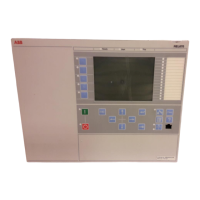Table 29: Fault voltage and current for L1N / L2N / L1L2 faults
L1E L2E L1L2
Signal
Magnitude
(Volt or
Amps)
Angle
(Degrees)
Magnitude
(Volt or Amps)
Angle (Degrees) Magnitude
(Volt or
Amps)
Angle
(Degrees)
IECEQUATION15084 V1EN-US
55 0 55 0 55 0
IECEQUATION15085 V1EN-US
55 180 55 180 55 180
IECEQUATION15086 V1EN-US
IECEQUATION17075V1 EN-US
IECEQUATION17076V1 EN-US
0
0
IECEQUATION17079 V1 EN-US
IECEQUATION17090 V1 EN-US
IECEQUATION15087 V1EN-US
0 00
IECEQUATION17077 V1EN-US
IECEQUATION17078 V1 EN-US
IECEQUATION17080 V1 EN-US
IECEQUATION17091 V1 EN-US
Where;
Catenary impedance ZC1 = RC1 + j*C1
Feeder impedance ZF1 = RF1 + j*F1
Rail impedance ZR1 = RR1 + j*R1
RC1 : Catenary resistance in ohms provided as setting
XC1 : Catenary reactance in ohms provided as setting
RF1 : Feeder resistance in ohms provided as setting
XF1 : Feeder reactance in ohms provided as setting
RR1: Return conductor resistance in ohms provided as setting
XR1: Return conductor reactance in ohms provided as setting
3. Wait for 0.09 seconds and update the voltage and current back to the values
provided in Table
28.
4. Wait for a few seconds, and check the distance-to-fault value in km displayed
on the local HMI.
10.12.6.2 Completing the test
GUID-0FE44853-E8EE-4E70-A588-5E21565B56BF v1
Continue to test another function or end the test by changing the TestMode setting
to Off. Restore connections and settings to their original values if they were
changed for testing purposes.
10.12.7 Current harmonic monitoring CHMMHAN
GUID-50D342C0-6B35-4623-9503-EFF346831101 v1
GUID-804F309E-B02F-4F6B-B0FC-2C7AE3F12DBA v1
Prepare the IED for verification of settings outlined in Section
"Preparing the IED
to verify settings".
10.12.7.1 Verifying the signals and settings
GUID-026F1A4F-E9A8-43DC-87E1-0831E0123E50 v1
The current can be injected using common test equipment.
Section 10 1MRK 506 377-UEN C
Testing functionality by secondary injection
174 Railway application RER670 2.2 IEC
Commissioning manual

